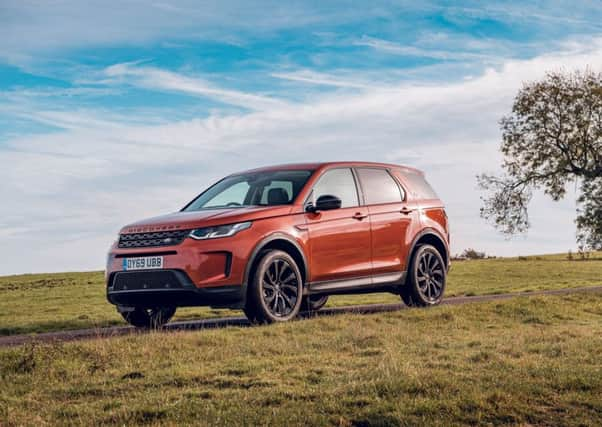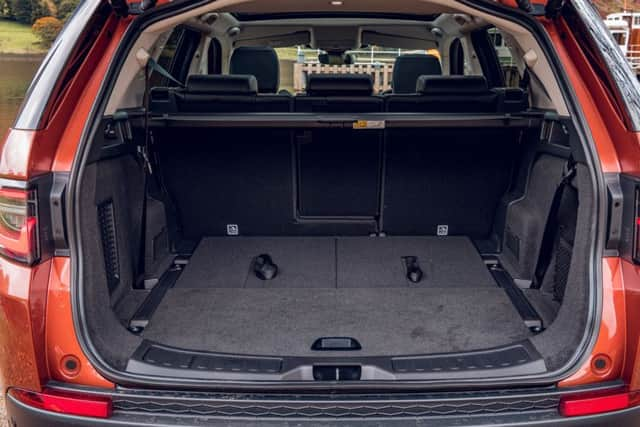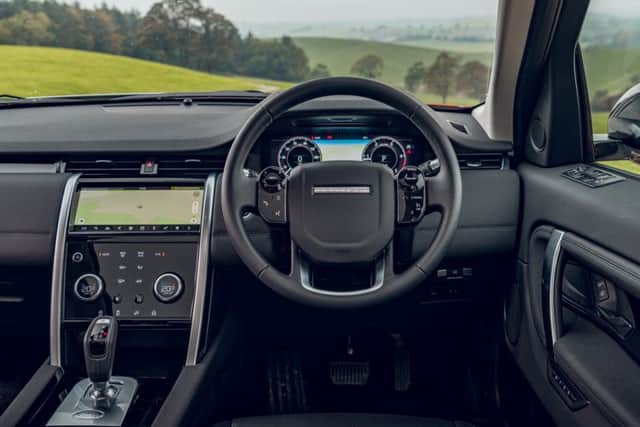Review: Land Rover Discovery Sport


Ullswater, Cumbria. A retired couple wandered over to ask about the Land Rovers mustered outside the lakeside hotel. They’d arrived in a Mercedes-Benz SUV to walk their dogs.
Wife said the Discovery Sport was a usefully compact size but how fast was it? Quick resumé: she had a very powerful BMW X5, which she said she needed for speedy overtaking of cyclists on the country roads. Argh…
Advertisement
Hide AdAdvertisement
Hide Ad“But dear, you don’t need something that fast,” purred her husband. “You just wait until there’s a straight bit of road.” Exactly, and then with care.


This year Evoque got subtle visual exterior changes and this has happened to the Sport. It saves the expense of a complete revamp. The alterations are effective all the same – new front and less distinctive rear lights in new “bumper” panels but nothing to irritate recent buyers of the outgoing Sport, until they step inside. It has clear screen technology with smarter interfaces and communication, improved seats, more storage space in the doors, in the centre box and dashboard. Middle seats are split 40/20/40. The back row has uprated storage space and temperature controls. Two 5ft 6in adults can be comfortable there. Eight USB and three 12v sockets and a 4G wifi hotspot keep everyone charged and connected. Tablet holders with charging points are optional for the middle seats. A wireless phone charging pad is an option in the front.
The clever terrain response system has been refined and now includes an automatic setting – which in most circumstances gives optimum traction. The diesel tank capacity rises 20 per cent to 65 litres and there is a 25 per cent similar increase in the urea tank. Economy improves but most engines are thirsty. Trailer haulers can specify the electronic tow guidance system which can make reversing easier.
Prices start at £31,575 which buys the front-wheel-drive, six-speed 2-litre 150hp diesel in Standard trim. It is the only model in the range without the terrain response system, or all-wheel-drive, seven seats and the mild hybrid charging. The D150 is available with the nine-speed automatic gearbox at £36,425, bringing all the goodies.
Here’s the rest of the engine line-up, diesel first. The numbers are metric ps power ratings. Divide by 1.014 to get bhp. The D180S from £40,325. The D240S from £42,475. Petrol models are the P200 Standard from £36,777, the P250S from £41,375.


Trim levels are Standard, S, SE, HSE trim and R-Dynamic. Top price is £48,575 for the P250 R-Dynamic HSE. The seven-seat interior can be swapped for the five-seat interior which means you can carry a full-size spare wheel under the boot floor. Otherwise it’s a seal and inflate puncture repair system or hanging a slim spare wheel under the car.
MHEV integrates the starter motor drive to retain engine braking energy in a separate battery. At speeds below 11mph the engine will shut off when the driver applies the brakes, then use the stored energy to assist the engine under acceleration. To improve economy and emissions the 4x4 system switches to front-drive when cruising.
Coming soon: a plug-in hybrid 1.5-litre, petrol three-cylinder with mains chargeable batteries for better economy and emissions.
Advertisement
Hide AdAdvertisement
Hide AdWe tried the £41,425 P200 S R-Dynamic and the £43,175 D180 SE on a 170-mile return route, reaching the Land Rover Experience centre on the Broughton Hall estate near Skipton, North Yorkshire.
Here we had a convincing off-road drive. The Sport now has a “feet-off” setting which manages the car’s off-road traction at fixed speeds between 2mph and 21mph. You just steer and brake.
It is better and more comfortable in the rough but most owners will not reach that level of its ability in daily life. However, buyers are offered a free half-day session at an LRE centre. They are shown how everything works. Courses started in 1989, with the launch of the Discovery and now 1.37 million owners take part annually.
On road the car is lovely. The next day I questioned an owner of both “old” and new models: one word, “fabulous”.
Verdict: Another winner. But the more powerful versions still use plenty of fuel.